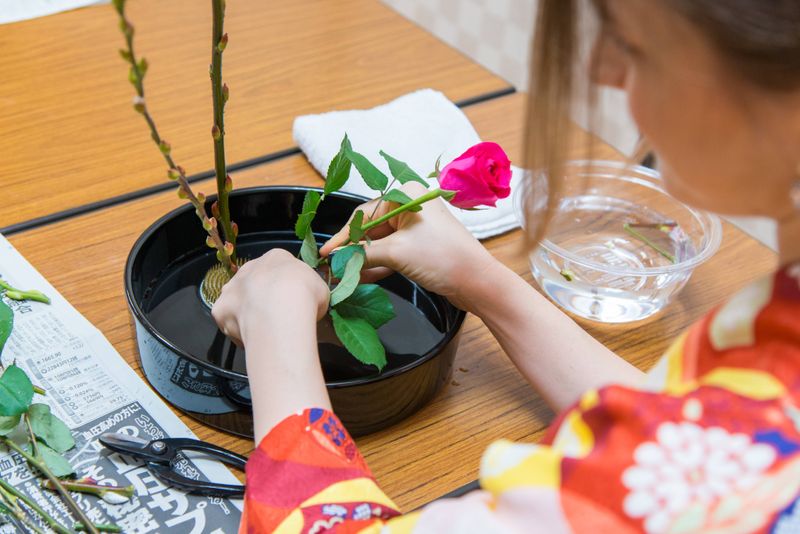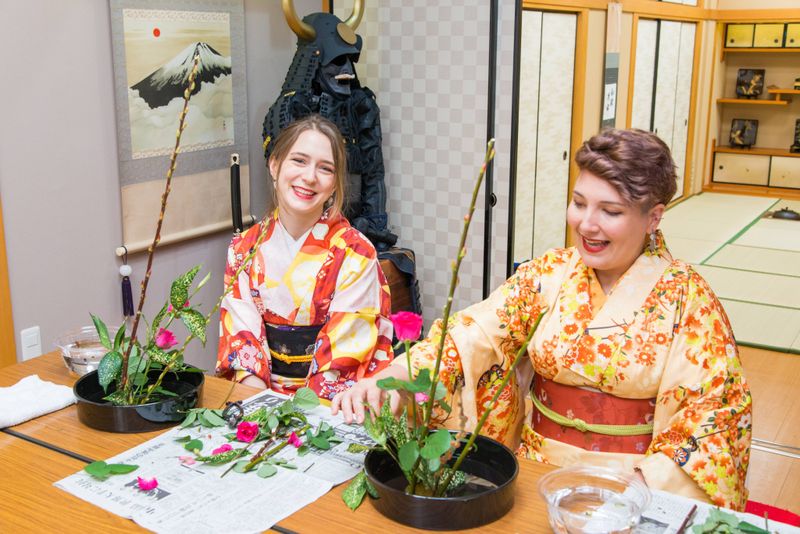Jun 16, 2021
A Deeper Look into the Precise Art that Mirrors Japanese Culture: Ikebana
Precision creates timeless beauty in the realm of Ikebana. Vastly different from Western flower arrangements, Ikebana is a window to the heart of Japanese culture. While Western bouquets focus on the fullness of flowers, Ikebana is more sparing and focuses on the angles, the three main points, and the varying heights of the flowers and accompanying foliage. Honestly, the first time you saw Ikebana, you probably thought it spare and deliberate, and it is. There are many rules that you don’t even imagine by just admiring it.

I loved the colors of these roses.
A Short History
The beginning of Ikebana is mysterious and foggy, although there are many theories. However, it is clear that it has deep ties with Japanese history, dating back to the Muromachi Period (late 14th to the mid 16th century). At first, flowers were used to appreciate the changing of the seasons and also used on Buddhist altars. This grew into experiments with flower arrangements in imported Chinese vases and developed in the late Muromachi Period through Senno Ikenobo as he created philosophies, art standards, and teaching methods that are actively taught even today.
Ikebana is by no means a static art form; it continues to develop and adjust to the times. Western flowers were accepted and are still used in modern Ikebana. Many people seeking to understand and develop an understanding of Japanese culture reach to Ikebana for a lending hand. Like many aspects of Japanese culture, including tea ceremony and others, Ikebana, while still art, has precision and rules. Even in Japanese life, there is an unspoken set of rules and a beauty to them.
Styles
Nowadays, there are different schools with different styles. Some even extend to using glass, iron and other materials instead of flowers. More standard styles differ by emphasizing precision of shape or designing it to look like it naturally appears. Despite these differences, one thing is clear, there is still a format of rules to discourage careless designs. Ikebana opens society up to a new view of beauty and balancing opposites, having a sort of symmetry.
Ikebana Experience
When first learning, while it may be difficult to adjust to the beauty standards, because they are vastly different from Western arrangements, it is well worth sticking with it. Ikebana appreciates the beauty of not only flowers, but twigs, berries, seeds, and grass.
I have tried making my own Ikebana a few times. I tried to follow the rules explained to me, but according to my teacher, it was still a bit off. However, it was still beautiful to me! I loved taking my creation home and putting it on display.
Fun story time: The first time I ever tried Ikebana was with my host family's grandmother when I was 16. She was a certified teacher. I made my creation and she came over and said, "It looks beautiful. Do you want me to correct it based on Japanese standards?" I answered yes and watched as she completely changed my creation. Haha. I guess I was pretty off!
Most recently, I tried it in Asakusa. I worked with some greenery, twigs, and pink roses. I have never pictured roses in a Japanese arrangement, (it feels like such a Western flower arrangement basic) however, it looked great! It was a bit difficult for me to find symmetry and balance. Not to mention, the flowers are harder to press into the spiky holding stick than they seem.

I got to wear a beautiful kimono during this experience which means I got some great photos!
A Japanese Ikebana experience is a great way to learn more about Japanese culture and is perfect if you love flowers. Some of my other friends have fallen in love with it and started attending an Ikebana school. While I did enjoy my time, I am not quite that dedicated.
What is your favorite flower combo for Ikebana? Have you ever tried it?
Teacher, Traveler, Dancer -
Currently living in Gifu -
I love Japan, dance, cats, food, and fashion!



0 Comments